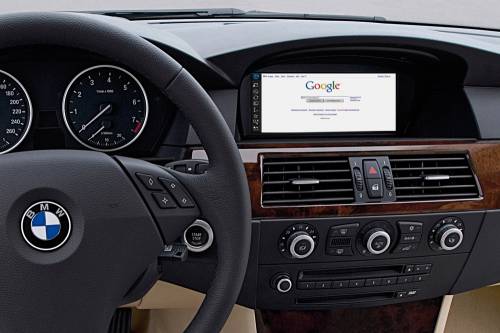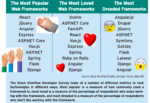
As the momentum behind connected cars and automotive software builds, the World Wide Web Consortium has decided to make sure the Web is prepared for this new generation of integrated applications.
The W3C has announced a new Automotive Working Group to standardize secure Web access to vehicle data. The group will focus on the use of Web technology to provide real-time data and updates to car owners ranging from weather to traffic, and how connected car applications and mobile device integrations interface with that data.
“At a very high level, W3C recognizes that the Web is transforming many industries, and there is great value in converging around the same standards,” said Ian Jacobs, the lead of the W3C’s Web Payments Activity group, who until recently served as head of communications for W3C. “That is why we are now actively working with the digital publishing, entertainment, mobile, payments and now automotive industries.”
The Web standards organization is also collaborating with a wide auto industry coalition to standardize Open Web Platform access. The W3C’s efforts around connected car specifications date back to February 2013, when the Automotive and Web Platform Business Group launched to draft specifications for a wide swath of car data, including vehicle identification information and data for acceleration, speed, tire pressure, battery, even seat position and climate.
The group has included not only car manufacturers, but chip makers, browser makers and mobile carriers as well. It includes companies from Ford, General Motors, Hyundai and Jaguar, to BlackBerry, Nokia, Intel, Samsung and others.
“Automotive industry companies started the Business Group as a place to work together and with the larger Web community,” said Jacobs. “That group was organized and run by industry players who now wish to standardize their APIs in order to get broader community uptake. The fact that they are doing this work at W3C also helps them connect with the work going on in other groups they will also find useful, related to privacy, security, accessibility and so on.”
The Automotive and Web Platform Business Group is handing off the vehicle API specifications to the new Automotive Working Group, which will work to advance them through the Recommendation Track. According to its charter, the new group “will develop APIs to expose vehicle data and information from an automotive network to a Web application.” As car OEM information varies, the specification will be broken down into a Vehicle Information Specification concerning data access methods, and a Vehicle Data Specification to standardize data elements.
The Automotive and Web Platform Business Group, on the other hand, will transition to developing requirements on new topics such as media tuners, speech interfaces, and a list of other potential topics.
(Related: Mobile is going beyond smartphones and tablets)
The W3C has its hand in Web standardization efforts from HTML5 and WebRTC to the social Web. Now, as automakers work to enhance user interfaces and functionality while both Apple and Google begin expanding the reach of their mobile operating systems into automotive software, the Web standards organization is stepping into the connected car realm. The Automotive Working Group has a target end date of June 2016 to develop Open Web Platform APIs and specifications for HTML5 and JavaScript application developers to access in-vehicle data. Jacobs believed the working group can have a pronounced impact on not only functionality but also safety of connected car applications.
“The automotive industry is already talking about [connected car] challenges, and we will learn more from them,” he said. “We expect some innovative user interfaces to reduce distraction (e.g., vibration in the steering wheel as a signal, or voice-activated controls). There will also likely be efforts to detect who is using a service and limit functionality depending on whether the person is a driver or passenger. Lastly, we expect to see increased safety through the use of sensors and connectivity.”






